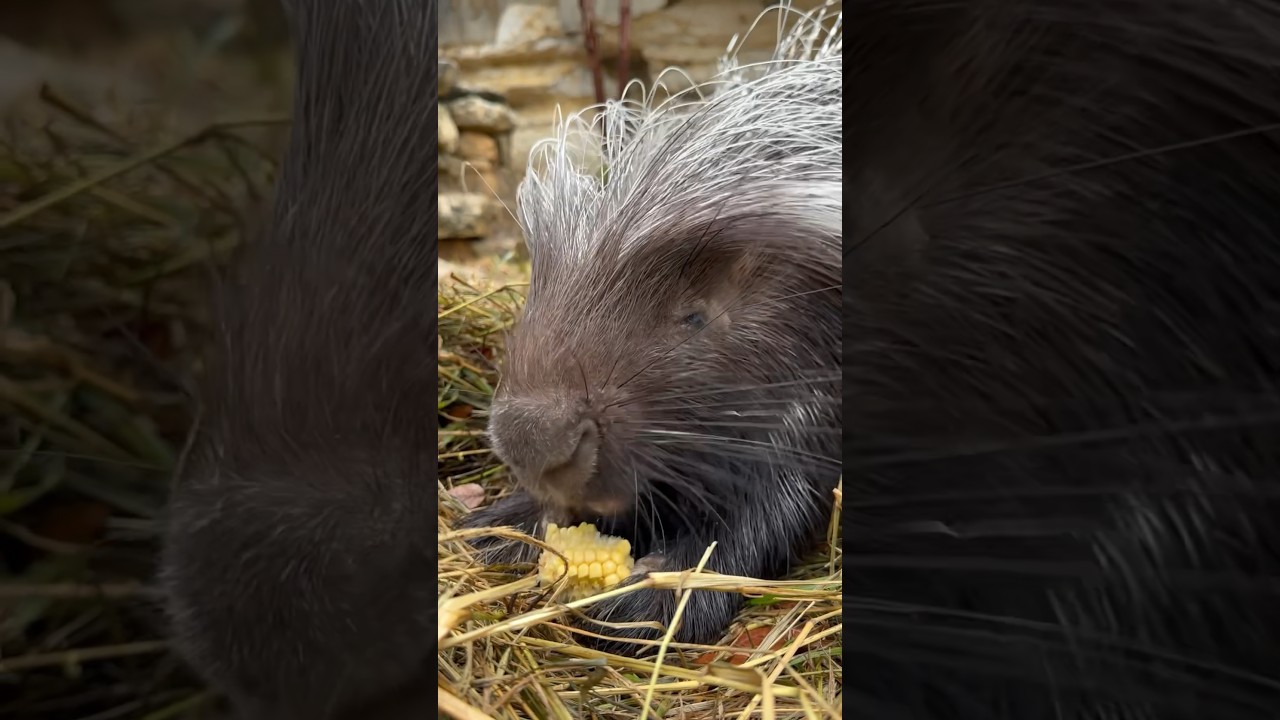– Unraveling the charm of simple joys through the understated spectacle of watching animals eat
– Exploring how observing everyday animal activities can foster a deeper appreciation for wildlife
– Unveiling the complexity of seemingly mundane animal behaviors and what they teach us about life
What if I told you that one of the simplest activities could capture our attention and bring a sense of pleasure that often eludes us in the hurried pace of modern life? Yes, I’m talking about the very basic action of eating. But not just any eating – it’s the sight of an animal like Calvin – the friendly neighborhood corn-loving creature – indulging in his favorite snack. This simple viewing has sparked wonder and adoration across various social platforms, and here, we delve into the peculiar draw of such moments and what makes them significant in the grand tapestry of natural behavior.
These instances might seem trivial at first glance – a distraction perhaps – but upon closer inspection, they reveal a mosaic of instinct, innocence, and insight. The allure of an animal munching away contentedly is not just in its ‘cuteness’ but in the joy of witnessing life in its purest form. It offers an unscripted reenactment of survival and contentment – capturing the essence of existence itself.
Consider Calvin, a symbolic stand-in for any animal from the humblest squirrel to the grand elephants of the savanna. His rhythmic crunching is more than just a process of sustenance. We are provided with a window to the evolutionary ingenuity of species coexisting with us on Earth. Every creature has peculiar dietary niches and food selection behaviors, often honed over millennia. What you see as a simple act of corn consumption is, in reality, a living exhibit of the intricacies molded by evolution’s unyielding hand.
The mechanics of eating can be both intriguing and adorable. Have you ever noticed the precise way Calvin handles each kernel, rotating it with dexterity afforded by nimble digits or, perhaps in the case of other animals, by specialized mouthparts or teeth? These are the products of the relentless struggle for efficiency – nature’s patent design for optimal energy intake, something we often take for granted amidst the hustle and bustle of heat-and-eat meals.
AMoments like these afford us a deeper connection to wildlife and subconsciously remind us of our intrinsic bond with nature. Though we might not be foraging for our food or scouting the highest cobs, our roots remain intertwined with the creatures around us. This embedded relationship is a window into our ancestral past and reflects our planet’s collective journey of life.
Calvin’s corn consumption reminds us of our connection to the natural world, but it serves as an educational primer for formal behavioral studies. By observing, we unknowingly become field researchers, noting the preferences, habits, and peculiarities indicative of an individual or species. The way Calvin might shoo away competitors or sash some of his bounties for later speas to the broader topics of animal cognition, planning, and social behavior.
The joy of discovery is a fundamental human trait, and our curiosity is sparked when we witness the unexpected – when an animal reveals a characteristic or behavior that seems strikingly relatable or surprisingly inventive. The intricacy of a beaver constructing a dam or a bird weaving an intricate nest is echoed in Calvin’s meticulous kernel selection and consumption process.
And what about the social dynamics on display? Imagine Calvin is not alone; instead, he’s part of a corn-eating symposium. Interactions within such a group can reflect the ebb and flow of animal societies, unveiling hierarchical structures or social bonds that are often overlooked. Through the lens of their interactions, we gain perspective on our own social constructs and behaviors.
Engaging with these moments garners a sense of peace and mindfulness. Watching Calvin eat is a form of environmental meditation, enveloping the viewer in the zen of the now, connected to the life cycle unfolding on screen. It’s a respite from the digital cacophony and an anchor to the present, grounding us with the sheer simplicity of an essential act.
Furthermore, it makes us realize the importance of conservation. Every snack time you observe so fondly is a delicate part of the complex web of ecosystems. It shines a light on why habitats must be preserved – not just for the grand spectacles of migrating herds or soaring raptors, but for these intimate, serene moments that are available to us sometimes just outside our window.
This fascination with animal behaviors should not stay confined within the pixels of our screens or the boundaries of our yards. It is a call to action, a beckoning to engage more proactively with the world outside our doors. From backyard bird feeders to sprawling national parks, opportunities to see wildlife in action are abundant. Here, we understand the utmost importance of biodiversity and why every corn-loving Calvin, with his unique ways and roles in the ecosystem, is worth watching.
In closing, the next time you come across a video or, better yet, the real-life spectacle of an animal engaged in the act of eating, I invite you to pause. Look beyond the surface-level charm and delve deeper into the narrative playing out before you. What Calvin can teach us beyond theory is delicious. Tune into the subtle lessons imparted by these seemingly mundane actions. Embrace the unpredictable storytelling of nature. As you revel in the simple delight of observation, may you find connection, education, and inspiration – all from the act of one animal enjoying his meal.
*****
Source Description

